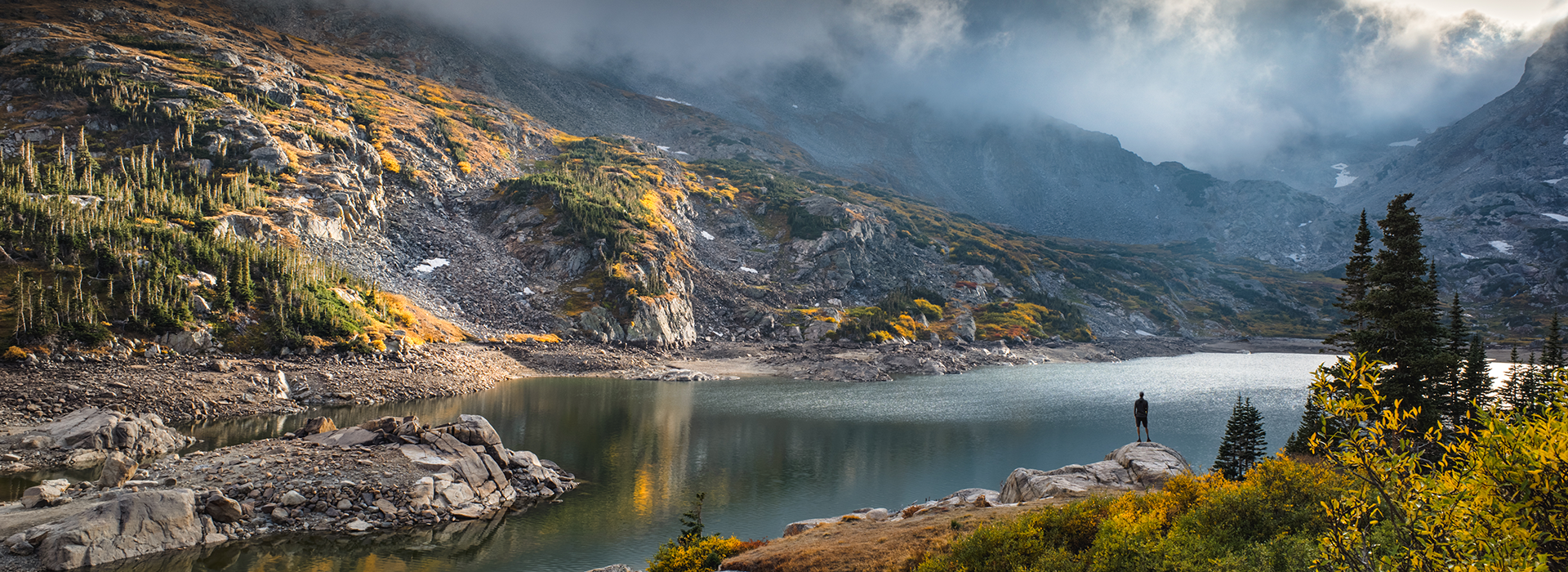Can We Save The Earth?
By Jenn Fields

A map of Maine can fool you. All of the green conjures images of deep forest and wetlands, the vast North Woods stretching off toward Canada—the sort of robust carbon sink we need more of right now. But, rather than letting those verdant dreams run wild, the Maine Climate Council decided to quantify them and determined that only 20.4% of the state’s land is actually conserved. Maine’s neighbors, which combined are about the same size as Maine, have set aside more land, the Climate Council found; all together, New Hampshire, Vermont, Massachusetts, Connecticut, and Rhode Island have preserved more acres and a larger percentage of land, 27.2%, according to a 2019 report.
“We have a lot of private land in the state of Maine,” says Jenny Kordick, executive director of Maine Outdoor Brands (MOB). “We have national parks and state parks that count toward that, and we have a lot of land trusts, but there’s a lot of private land.”
With the push to preserve 30% of land and water by 2030, these numbers matter. MOB is one of many organizations around the world backing the 30×30 initiative, which seeks to protect 30% of land and water to fight both biodiversity loss and climate change. Since the basic concept behind 30×30 has specific targets but can be interpreted broadly, individuals and organizations are trying to figure out exactly what it will mean to apply 30×30 at the local, state, and federal level in the U.S.
Some nonprofits have tapped into 30×30 as a useful rubric for talking about conservation. Others are putting their staffers with geographic information system (GIS) expertise to work figuring out the gritty details, looking at carbon stock, biodiversity hot spots, private land versus public, and, of course, defining all of it. A Defenders of Wildlife analysis found that under some definitions of “protected,”Alaska is the only state exceeding 30%, but including some “multi-use” land in the fold brought the total up to 12 states (Alaska, Hawaii, and the states of the Western U.S.). Federal mandates can do a lot to get some states to 30%, but others will fall far short of the mark without state and local initiatives.
“Our scientists in New York specifically are taking a look at what’s protected in New York, where that is, and what habitat issues that solves,” says Jessica Ottney Mahar, policy and strategy director for The Nature Conservancy (TNC) in New York. “At the national level, we’re also thinking about, again, what has been protected—and what does that mean? What counts as protection? Then we’re also looking at freshwater systems and oceans. What does it mean to protect fresh water? I think part of what’s important about this policy is the conversation it’s stimulating. It’s an important moment for the conservation movement.”
A GLOBAL DEAL FOR NATURE
The idea behind 30×30 is rooted in science. In a science policy review published in Science Advances in 2019 called “A Global Deal for Nature,” a team of wildlife biologists, ecologists, and sustainability and biodiversity advocates analyzed how restoring land and preserving ecosystems could help us meet the Paris Agreement goal of stopping warming at 1.5° Celsius. “Climate models show that we are approaching a tipping point; if current trends in habitat conversion and emissions do not peak by 2030, then it will become impossible to remain below 1.5°C,” they wrote in the report’s introduction. The Global Deal for Nature targets 30% of the Earth to be formally protected and an additional 20% designated as climate stabilization areas, by 2030, to stay below 1.5°C.
For outdoorists, the 30×30 goal has obvious benefits: In addition to slowing warming and biodiversity loss by preserving carbon-holding habitats, 30×30 also means more land will be preserved for outdoor recreation. “For us, I think the pandemic really has brought to light why we need to support efforts like this,” Kordick says. “We’ve clearly seen a huge outdoor participation boom this year, and our industry is dependent on going outside. We love seeing people get outdoors, and we want to make sure there are places to go.”
PUSHING FOR 30X30 POLICY
Conveniently for proponents of preservation,“30×30” is also a simple, smart way to talk about conservation, says Ryan Billingham, communications director for Wisconsin Conservation Voters. “It just frames it so well—‘30×30.’ It’s catchy,” he says “Obviously here’s some mass appeal to having that sort of frame around it, but I also think it’s really well thought out. It brings up points that are pretty simple to grasp and are pretty common sense.”
That might be why hundreds of elected officials—from state representatives to county commissioners and city council members—have signed open letters supporting 30×30 (including 60 officials in Wisconsin). The first open letter, signed by 450 local and state elected officials, was published the day before President Joe Biden signed an executive order directing the secretaries of interior, agriculture, and commerce to gather information and submit a report on how to achieve 30×30 nationally. In early March, 70 mayors also pledged their support through the League of Conservation Voters.
Though public land policy enforced at the Departments of the Interior and Agriculture often drives the national conversation about conservation (think: Bears Ears), local- and state-level agencies will play integral roles in achieving 30×30 as well. “The way we try to frame it is, lands are local, and you can see the 60 elected leaders that signed onto the letter agree,” Billingham says. “When you tell people their local park was funded by the Land and Water Conservation Fund, they understand what we’re trying to do.”
Legislators in several states, from South Carolina to Hawaii, have introduced 30×30-focused bills. New York has a bill in the state legislature to enact 30×30 by directing the New York State Department of Environmental Conservation to set goals for 30% conservation by 2030 that also consider environmental justice. But, according to Ottney Mahar, local municipalities are looking at 30×30 as well. “We’re even seeing some communities do their own bond measures todo the work,” she says.
The Nature Conservancy and its partners are also looking at how 30×30 could work in our nation’s largest city, she says. “We’re also looking at who is protected.”
“Nature in cities takes all shapes,” Ottney Mahar says. “We have iconic parks in New York, like Central Park, and the Buffalo Parks created by Olmstead. There’s a lot going on with urban forestry, as well as green rooftops. There are a lot of untapped spaces in cities.”These types of climate-mitigation projects also support pollinators, improve stormwater retention, create a cooling effect in urban heat-island zones, and become places where people can relax and enjoy nature—and one of TNC’s missions is to make sure everyone has access to all of these benefits.
BUILDING MOMENTUM
In the U.S., the idea behind 30×30 has been on the national political stage for a couple of years. In 2019, Sens. Michael Bennet, D-Colo., and Tom Udall, D-N.M., introduced a Senate resolution for a national 30×30 goal. And, before she became the interior secretary, Rep. Deb Haaland introduced a bill to the House to establish a national goal of conserving 30% of the land and ocean of the United States by 2030.
But the Biden administration’s executive order in January has helped expand the conversation about 30×30, and the administration’s general focus on climate issues has helped local and state lawmakers as well, says Colorado state House Rep. Dominique Jackson, a Democrat representing Aurora, who signed the open letter on 30×30. “Making [climate] a national priority certainly helps me as a lawmaker in pushing that it’s a local or regional priority,” she says. “It’s not just in the optics, not just in the framing of it, but in building the momentum.”That momentum can help local lawmakers move initiatives forward. During her time in Colorado’s state House, Jackson fought for clean energy and environmental justice, and her Environmental Justice for All Act, a bill she has been working on for several years, has the support of the governor and the public.
She called it a “big, complex piece of legislation” that will require state agencies to map and measure environmental impacts to protect historically disenfranchised communities. She sees 30×30 in a similar light: potentially big, but something everyone wants.
“The goal of 30×30 is ambitious, but I still think it’s something that Coloradans want,”Jackson says. “It just takes collective ideas. And it’s not just state government—we need our friends in Congress to help us as well; we need our friends in local government.”
Outdoor Retailer Magazine is made possible with sponsorship by:
